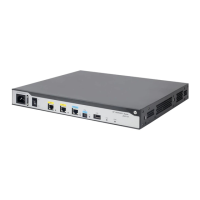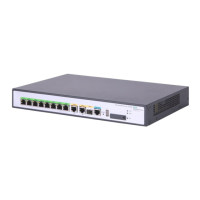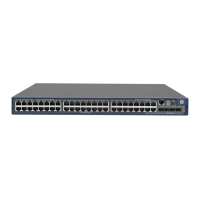71
IGMP configuration task list
Configuring basic IGMP features:
• (Required.) Enabling IGMP
• (Optional.) Specifying an IGMP version
• (Optional.) Configuring a static group member
• (Optional.) Configuring a multicast group policy
Adjusting IGMP performance:
(Optional.) Configuring IGMP query and response parameters
(Optional.) Enabling fast-leave processing
(Optional.) Configuring IGMP SSM mappings
Configuring IGMP proxying:
• (Optional.) Enabling IGMP proxying
• (Optional.) Enabling multicast forwarding on a non-querier interface
• (Optional.) Configuring multicast load splitting on an IGMP proxy
(Optional.) Enabling IGMP NSR
Configuring basic IGMP features
Before you configure basic IGMP features, complete the following tasks:
Configure any unicast routing protocol so that all devices can interoperate at the network layer.
Configure PIM.
Determine the IGMP version.
Determine the multicast group and multicast source addresses for static group member
configuration.
Determine the ACL to be used in the multicast group policy.
Enabling IGMP
Enable IGMP on the interface where the multicast group memberships are established and
maintained.
To enable IGMP:
1. Enter system view.
system-view
N/A
2. Enable IP multicast routing
and enter MRIB view.
multicast routing
[
vpn-instance
vpn-instance-name ]
By default, IP multicast routing is
disabled.
3. Return to system view.
quit
N/A
4. Enter interface view.
interface
interface-type
interface-number
N/A
5. Enable IGMP.
igmp enable
By default, IGMP is disabled.

